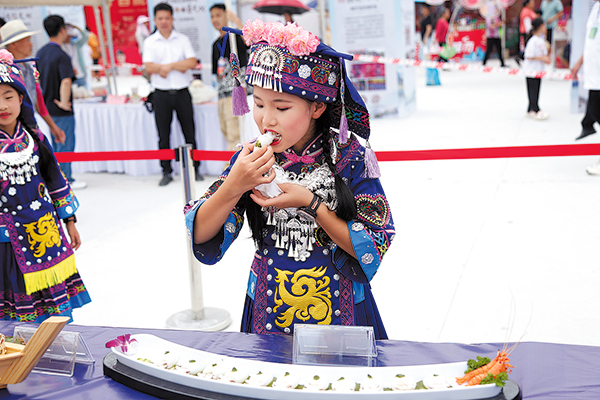TCM plantations are herbal remedy for communities
Innovative health teas not only benefit patients, but also the villages and people where the ingredients are planted, Yang Feiyue reports.


"We raise the soil into rows for better root development and make sure the excess water can drain through the small ditches we dig," Huang explains.
An irrigation system runs through the fields using a shared pipeline to deliver clear water or nutrient solutions, depending on the plants' needs.
After planting, farmers must continuously monitor soil moisture, fertilize appropriately, and protect the young plant from pests and harsh weather. The entire cycle, from seed to harvest, stretches more than half a year.
Yet, most villagers deem the toil as a blessing.
Wang Xiuyu, in her 50s, began working in medicinal plant cultivation around 2019, when the opportunity first arose.
She recalls that before the introduction of medicinal herb farming, the villagers mainly grew rice, which only provided seasonal income.
After the rice harvest, there was not too much other agricultural activity, and fields often lay fallow due to water shortages and unsuitable weather conditions.
Many villagers, including Wang, had to leave home to find temporary jobs, leading to temporary family separations.
The arrival of the plantation brought a new source of stable income. Wang estimates she can earn around 10,000 to 20,000 yuan ($1,380-$2,760) annually from it.
As soon as the meadowrue corydalis root is harvested in May, the villagers begin planting rice, says Wei Zhongfu, a senior expert in agricultural science.



































